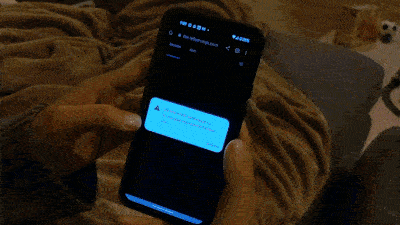First User Test for our Conversational Interview MVP
 Khoa Lam
Khoa Lam
Our original MVP was designed to engage users in meaningful conversations by prompting them to share stories and then recording their responses. As with every new venture, there are inevitable hiccups. Feedback is paramount: it shapes our direction, highlights our strengths, and crucially, illuminates areas that need enhancement. The very first user testing session was a blend of excitement, anticipation, and revelation.

The Setting | The inaugural test occurred at my home, with my wife serving as the primary tester. While the surroundings were familiar, the task was entirely research-oriented. |
Technical Glitches | Before delving into AI's core functionalities, we confronted a basic technical issue concerning microphone permissions. Addressing such rudimentary challenges is foundational to ensuring a frictionless user experience. |
Countdown Timer Fail | The countdown timer, originally designed to segment data for efficient AI processing, unintentionally introduced a rush element for the user. Balancing operational requirements with user comfort is a challenge we noted for future iterations. Feedback suggested a shift towards eliminating it. |
Transcription & Engagement | Leveraging Google's transcription service, we noticed the significance of transcription accuracy. The option for users to amend transcription errors is a prospective enhancement. Intertwining the AI's voice with user responses might also enrich the interaction, making it more dialogic. |
Exploring Audio Clip Utilization | Discussion ventured into the potential of AI-generated audio clips. These could amplify personal photo albums or morph into narratives for social platforms. The synergy of visual and auditory memories creates a novel dimension for user interaction. |
Arguably, one of the most enlightening aspects of the session was the exercise in restraint. As a builder, the impulse to jump in with solutions or explanations is strong. Yet, for a genuine understanding, it's essential to pull back, observe, and pose open-ended questions like "What do you think you should do next?" or "What do you expect will happen if you do that?". This approach not only garners unfiltered feedback but also stimulates the user's problem-solving instincts, offering a clearer view of their experience.
First-hand user feedback is invaluable. It not only pinpoints areas for improvement but also offers insights into user behavior and expectations. By observing more and intervening less, we gain a deeper, more genuine understanding of the user's journey.
Subscribe to my newsletter
Read articles from Khoa Lam directly inside your inbox. Subscribe to the newsletter, and don't miss out.
Written by

Khoa Lam
Khoa Lam
Inspiration chasing technologist. Craftsman of clarity. Advocate for style points.